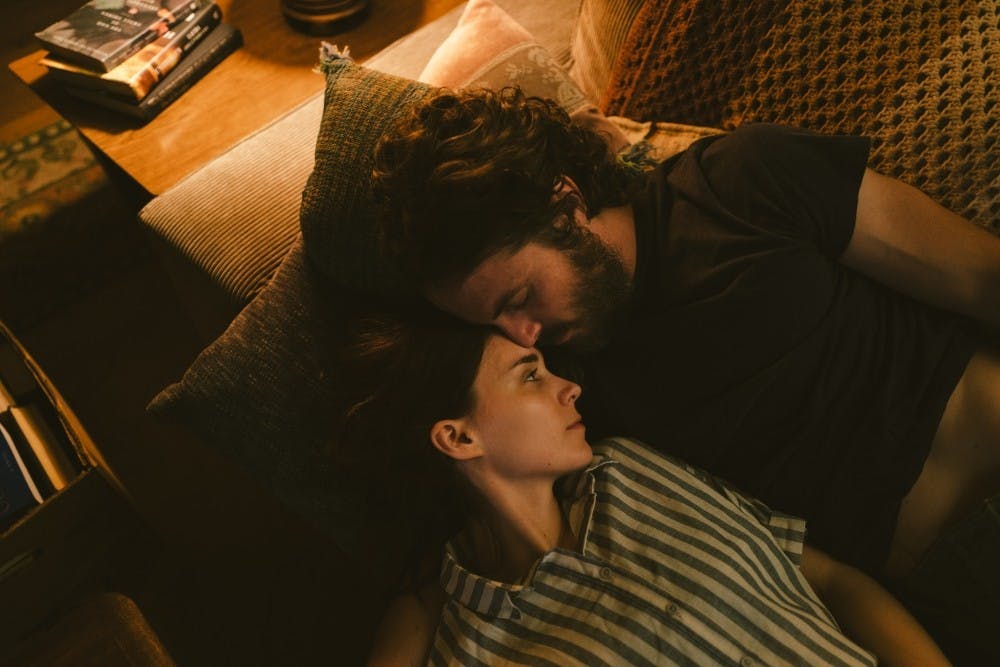Normally looking at the words “ghost” and “story” only leads to a creepy, unsettling feeling that sets the stage for a fright-filled evening event. “A Ghost Story” may be the antithesis of that genre, as its calming nature and slow-moving plot tell a story with illuminating ideas for humanity and loss.
“A Ghost Story,” directed by David Lowery and starring Casey Affleck as C and Rooney Mara as M, tells the story of how C’s passing leads him to becoming a lingering phantasm cloaked in the classic white, left to wander the home he lived in with M, as occupants filter in and out of the house and life and death continue to unfold without him.
The major payoff in this movie is the fact that it explores deep messages without ever forcing the ideas into the viewer’s heads. In fact, after many reflections, I find myself thinking and rethinking of what exactly the film is trying to say and coming to different conclusions each time.
On the surface, what it means to be alive and to mourn the dead are a big one, but so could be the idea that in the end, our lives are insignificant and it’s best to just enjoy the life you’ve got as time flows on without us. There is even a whole monologue by a future occupant that can essentially prove the latter theory correct.
However, as film, and especially this movie, is a subjective art, there can never be a clear answer, but still, it’s a movie that seeks to be of higher intelligence, which is as refreshing as it is bold. Its wide palette of color and vibrancy doesn't hurt either.
The acting done by both Affleck and Mara is also worthy of praise as some of the scenes require a certain laser focus in order to hold the emotional appeal sought. The real kudos goes to Mara though, as for the majority of the movie Affleck is under a sheet mainly observing and hardly moving.
Mara captivates throughout each of her scenes and feels as though she is actually experiencing the grief she is trying to portray. Her moments with Affleck feel genuine so buying into their romance isn’t hard, but seeing through it to the end of the grieving process… That proves to be more difficult.
A prime example is a scene that spans several minutes. I’m inclined to believe it was about five (it at least felt that long). The viewer watches Mara drown her sorrows in pie on the kitchen floor in a one-shot take, up until she needs to make a made dash for the toilet. Thrilling.
After seeing this in a piece of cinema I am able to firmly conclude that I wish to never see anything like that again and no film should feel the need to copy it. I was curious about whether or not she actually had to throw up and if so, how many takes did she do?
At any rate, this isn’t the only point in the film where it feels entirely too long and this largely takes away the enjoyment one should feel. At an hour-and-a-half runtime, you shouldn’t feel though you can hear each second is ticking away. Plus, while the imagery in the movie and its conclusion are interesting enough, too much of a good thing is never a great thing. Two wrongs don’t make a right, and in this instance, two rights don’t make a perfect.
“A Ghost Story” is a bold look at humanity and time, exploring what life and death leave in each other’s wake. If only the film had been a hair shorter, the pie scene cut in half and the overwhelming use of imagery peppered lightly, it might have been the surprise indie hit of the summer.
"A Ghost Story" hits theaters this Friday.
Overall score: 3.5/5
Reach the reporter at balnero13@gmail.com or follow @BaldnerOwen on Twitter.
Like The State Press on Facebook and follow @statepress on Twitter.




